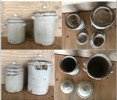Olive trees in Sicily
History, legend and curiosities…
The cultivation of olive trees in Sicily has ancient roots, thousands of years. It was the Phoenicians and the Mycenaeans who brought this plant to the island, native to the regions north-east of the Caspian Sea. The Greeks of Sicily, then, gave great importance to the olive tree so that eradicating even a single tree was a penalty of exile. Its history has had alternate phases, with the decline of the Roman Empire and the Arab domination in Sicily, the cultivation of the olive tree was neglected in favour of other species, like citrus.
It was only from the first half of the fifteenth century until the end of the sixteenth century that the olive tree began to impose itself, together with the vine, in the Sicilian landscape. The Benedictine and Cistercian monks brought important innovations to this sector, above all concerning the spread of oil mills. The importance of the olive tree and of the oil obtained from the pressing of its fruits, called "drupes", became enormous in the economic, cultural and religious history of the whole Mediterranean area.
The olive tree in the Bible is considered a symbol of peace and fertility, particularly with the tale of the universal flood “...and the dove returned to him (Noah) at nightfall, and here he had a new olive branch in his beak”. The chrism, the oil that makes the face shine, belongs to the Jewish culture: with it were anointed priests, prophets and kings (remember King David). The people of Jerusalem welcomed Jesus Christ by waving olive branches. Let us remember that the oil is used in several religious rites, especially Christian ones.
The olive tree is mentioned in the texts of Homer, represented in the graffiti and affreschi of the tombs in Egypt, named in the Arabic texts too. The olive tree, the mythical "Saracen olive tree" has inspired some of the greatest Sicilian writers, such as Pirandello, author of the famous comedy La Giara, Quasimodo, who in a few verses evokes the sounds and traditions of pressing "You could hear the millstone / and the thud of the olive in the tank”.
In the 16th century, a certain distinction began to be made among olive oils: the best for food, other ones for washing wool and lubricating machines, and other ones for lighting, hence the names lampante oils and ogghiu pi lu lumi, the oil used to power lamps. Another significant use of the oil is in medicine. In ancient medicine and until the immediate second after the war, olive oil was used as a laxative and anti-ulcer, the warm oil on the forehead, however, if accompanied by a cross sign, was considered effective against headaches and migraines; in Sicilian folk medicine different varieties of oil were used; remember the ogghiu di nivi, oil in which snow was melted and used to treat wounds; the ogghiu di carta, a remedy against inflammatory skin diseases; the ogghiu di linusa, oil of linosa used for arthromyalgia. The oil has also been used in cosmetics since ancient times to make fragrant ointments and balms for the body; for example, the Romans used it to keep their teeth white.
To underline the great importance that in the Sicilian culture, and above all, in the peasant civilization was attributed to the oil we remember some dialectal expressions that are now disappearing: Di jornu unni vogghiu e di sira spardu l’ogghiu (literally During the day I don't want anything and at night I waste the oil of the lamp), it is used to refer to people who to not doing things when it is due; and still acqua d’austu ogghiu, meli e mustu, it means August rain increases the production of oil, honey and must and many others ...
In the olive sector, traditions are strongly respected, especially in processing systems that use the same tools from millennia-old origins, obviously improved thanks to technical innovations but substantially the same. In Sicily, even the tools names related to production are those used in the past. We have the "Giarra", the container used to contain the oil, the "Burnia", the typical pot of cooked clay where the olives are kept and the "Tumminu", a unit of measurement used for the olives. And finally "lu trappitu" the traditional press oil mill.
The olive tree is rightly the symbol of the Mediterranean area as it adapts perfectly to the temperate climate and the different soil morphological properties. In fact, the natural characteristics of the Sicilian territory, the climate particularly mild and sunny allow the olive trees to grow lush throughout the territory, from the hinterland to the coast. So much so that in Sicily we can count on the presence of at least sixteen cultivars.
Il paesaggio delle colline della Valle del Belice, in particolare, si caratterizza per la presenza predominante di tre cultivar la Nocellara del Belice, la Cerasuola e la Biancolilla che danno origine ad oli extra vergini dalle peculiari proprietà organolettiche.
The landscape of the Belice Valley hills, in particular, is characterized by the predominant presence of three cultivars: Nocellara del Belice, Cerasuola and Biancolilla, which give rise to Extra Virgin Olive Oils with very unique organoleptic properties.





